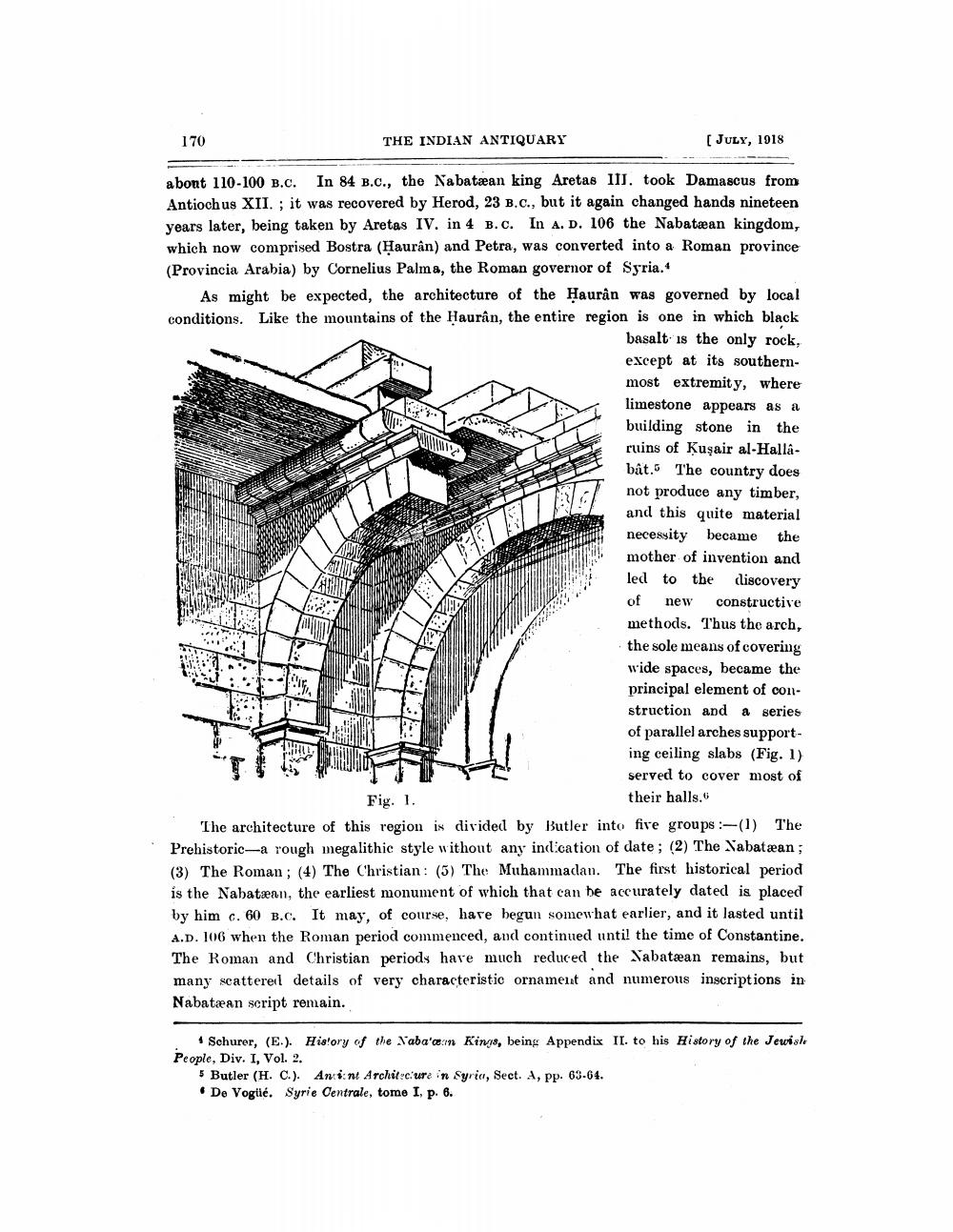________________
170
THE INDIAN ANTIQUARY
[JULY, 1918
abont 110-100 B.C. In 84 B.C., the Nabataan king Aretas Ill. took Damascus from Antiochus XII. ; it was recovered by Herod, 23 B.C., but it again changed hands nineteen years later, being taken by Aretas IV. in 4 B.c. In A.D. 106 the Nabataean kingdom, which now comprised Bostra (Haurân) and Petra, was converted into a Roman province (Provincia Arabia) by Cornelius Palma, the Roman governor of Syria.
As might be expected, the architecture of the Haurån was governed by local conditions. Like the mountains of the Haurân, the entire region is one in which black
basalt. is the only rock, except at its southernmost extremity, where limestone appears as a building stone in the ruins of Kuşair al-Hallabât. The country does not produce any timber, and this quite material necessity became the mother of invention and led to the cliscovery of new constructive methods. Thus the arch, the sole means of covering wide spaces, became the principal element of construction and a series of parallel arches supporting ceiling slabs (Fig. 1)
served to cover most of Fig. 1.
their halls. The architecture of this region is divided by Butler into five groups :-(1) The Prehistoric-a rough megalithic style without any indication of date; (2) The Xabatæan; (3) The Roman ; (4) The Christian (5) The Muhammadan. The first historical period is the Nabatæan, the earliest monument of which that can be accurately dated is placed by him c. 60 B.C. It may, of course, hare begun somewhat earlier, and it lasted until A.D. 106 when the Roman period commenced, and continued until the time of Constantine. The Roman and Christian periods have much reduced the Xabataan remains, but many scattereil details of very characteristic ornament and numerous inscriptions in Nabataan script remain.
Schurer, (E.). History of the Naba'in Kinis, being Appendix II. to his History of the Jewish People, Div. I, Vol. 2.
5 Butler (H. C.). Amint Architec'ure in Syria, Sect. A, pp. 63-64. • De Vogile. Syrie Centrale, tome I, p. 6.




